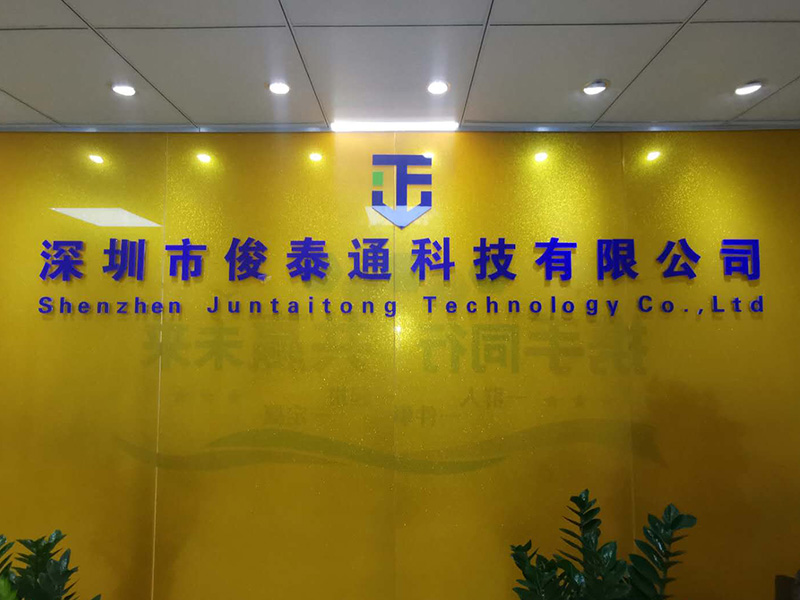How we interact with technology, through the interfaces we use, has changed radically with people becoming more comfortable using touchscreens whether in their private lives, professionally, or when interacting with public services such as banks and public transport.
When it comes to displays capacitive and multi-touch resistive touchscreens have provided users with a host of new capabilities and options.
But is that about to change in light of the Covid-19 pandemic? How can we ensure that the touchscreens we use, especially in the public realm, are safe to use?
“Even before the current Covid-19 pandemic, there had been growing concern over the hygiene of public touchscreens. Reports showed that touchscreens used on some self-service kiosks in fast-food restaurants tested positive for E. coli bacteria, for example, and that has brought into question the hygiene of publicly used touchscreens,” says LI JUN, Director, JUNTAITONG.
The current medical crisis makes it clearer than ever that more must be done to ensure the use of touchscreens does not cause the spread of harmful bacteria and viruses.
“Despite concerns over the use of touchscreens, they can eliminate the need for face-to-face interaction with customers, helping maintain proper social distancing and helping contain Coronavirus and other infections,” according to Crosby. “They are also more easily cleanable than physical buttons because they provide a smooth and continuous surface. They are simple and easy to clean properly; with regular cleaning, they can provide a much more hygienic alternative to conventional input methods on publicly used machines.”
Despite these advantages, changes are needed to the way we approach public touch screen usage in order to provide the safest possible solution.
“There are several key steps JUNTAITONG recommends, which can be taken to promote safety and hygiene in public touchscreens based on the problems currently found on public touchscreens,” says Crosby. “Installing flush edge-to-edge interfaces will make cleaning and disinfection far easier, as bacteria tend to be found in the nooks and gaps of public machines and touchscreens. Regular cleaning and disinfection of publicly used touchscreens are essential to maintain proper hygiene.
“Many touchscreen technologies, such as projected capacitive touch, can respond to the touch of a gloved hand or stylus. This means users can safely interact with touchscreens whilst minimizing the chance of catching a virus or infection or spreading it themselves.”
According to Crosby, specialist coatings for touchscreens are also available which can slow the spread of, or even kill bacteria.
“In situations where fixed function keys are necessary, solutions such as the JUNTAITONG can be implemented, where the keys are part of a single, uninterrupted glass surface which allows for easy cleaning. Where tactility is needed, touchscreens are now available which implement machined features such as dimples, grooves, and dials into the display. With these options, the glass remains unbroken and proves superior to moving buttons in terms of ease of cleaning.”
Blind Source Separation
An alternative, according to Betts, is blind source separation (BSS).
“This technique simply needs between four and eight off-the-shelf microphones, with no calibration required. The array geometry is flexible, providing the array is between 5cm and 30cm across. Ideally, there would be a clear 'line of sight' to the customer and, if space allows, a 2D array is preferable – but a linear array does also work.”
BSS is able to separate the incoming audio back into its constituent sources automatically. So not only is the customer's voice brought out of the background noise, it is clearly distinguished from the voice of the person at the neighboring kiosk.
“This is all done with data-driven machine learning. The system is continuously analyzing the sound field and can pick out the speech of the person in front of the kiosk – adapting automatically to the lunchtime rush or the quiet of a 2 am motorway pit-stop. Just like a human – but with no social distance required.”
As the concepts behind BSS are mathematical, it can be implemented on any general computing device.
“The CPU cost is well within the capabilities of a modern Arm processor that supports single-precision floating-point. Then it needs memory – as BSS is a data-driven approach, it needs a frame store to keep all the audio it’s analyzing. For 16kHz and eight microphones, that frame store could be as much as 40MB – totally within the capabilities of a modern Arm processor. Optionally, a camera with face detection could help with ensuring the correct customer is selected,” suggests Betts.
Then there’s the ASR and speech-to-intent system.
“Google managed to port its speech recognition system (currently English only) on to a pixel phone in less than 80Mb of memory. Similarly,
specialist multilingual speech-to-intent systems for a limited vocabulary can be implemented in under 500Kb of memory, depending on the size of the vocabulary.”
The COVID-19 pandemic has certainly highlighted the importance of good hygiene practice and strict implementation of health and safety procedures, and from traditional touchscreens to innovative audio solutions companies are looking to respond.

Длъжност: Overseas Sales Manager
отдел: Marketing Department
Фирма Телефон: +86-755-23202981
Е-мейл: Свържете се с нас
Мобилен телефон: +86-13434766815
уебсайт: jttkj.bulb2b.com
адрес: Room 507, Building A5, Tianrui Industrial Park, No. 35, Fuyuan 1st Road,Xinhe Community,Fuhai sub-district, Bao’an district, Shenzhen, China.